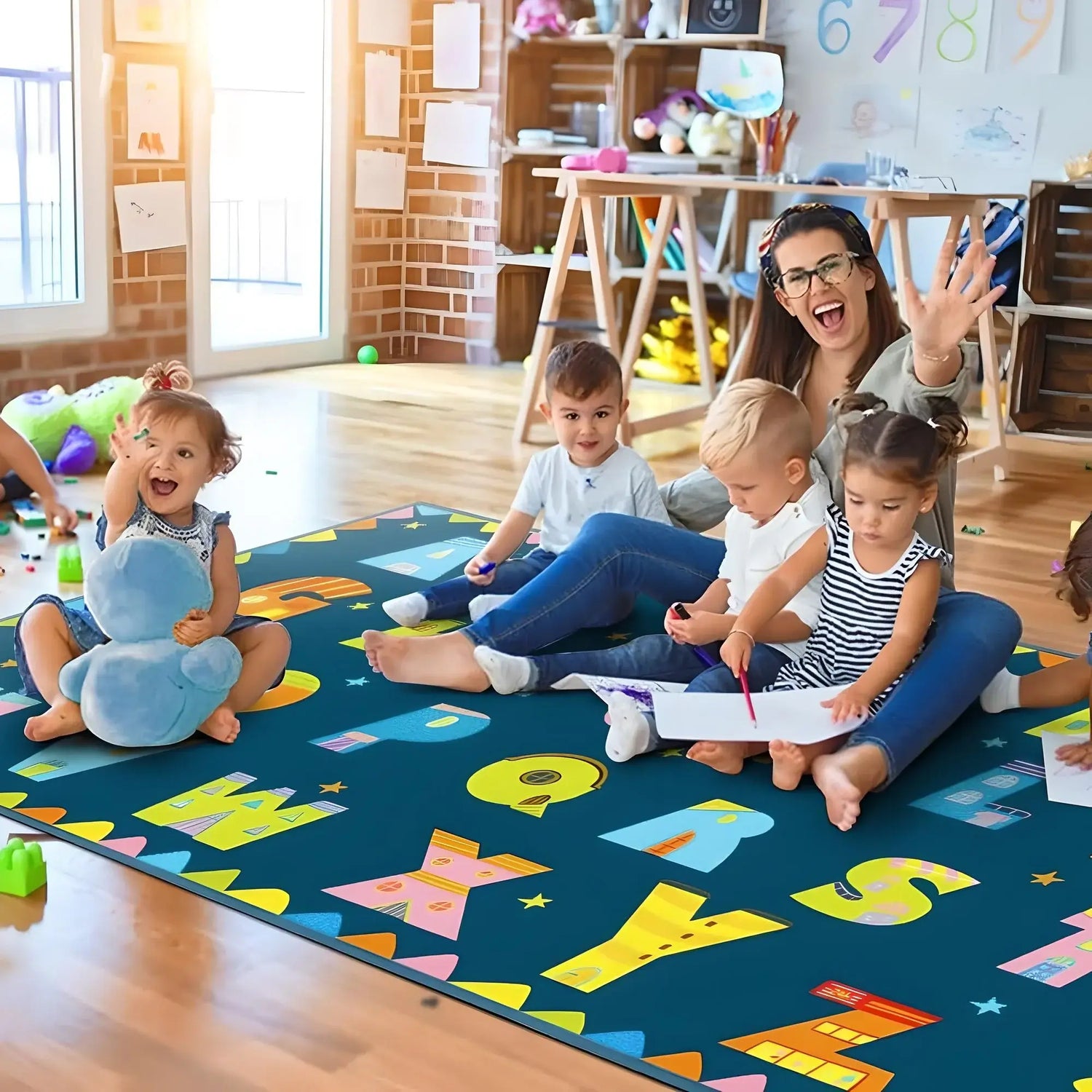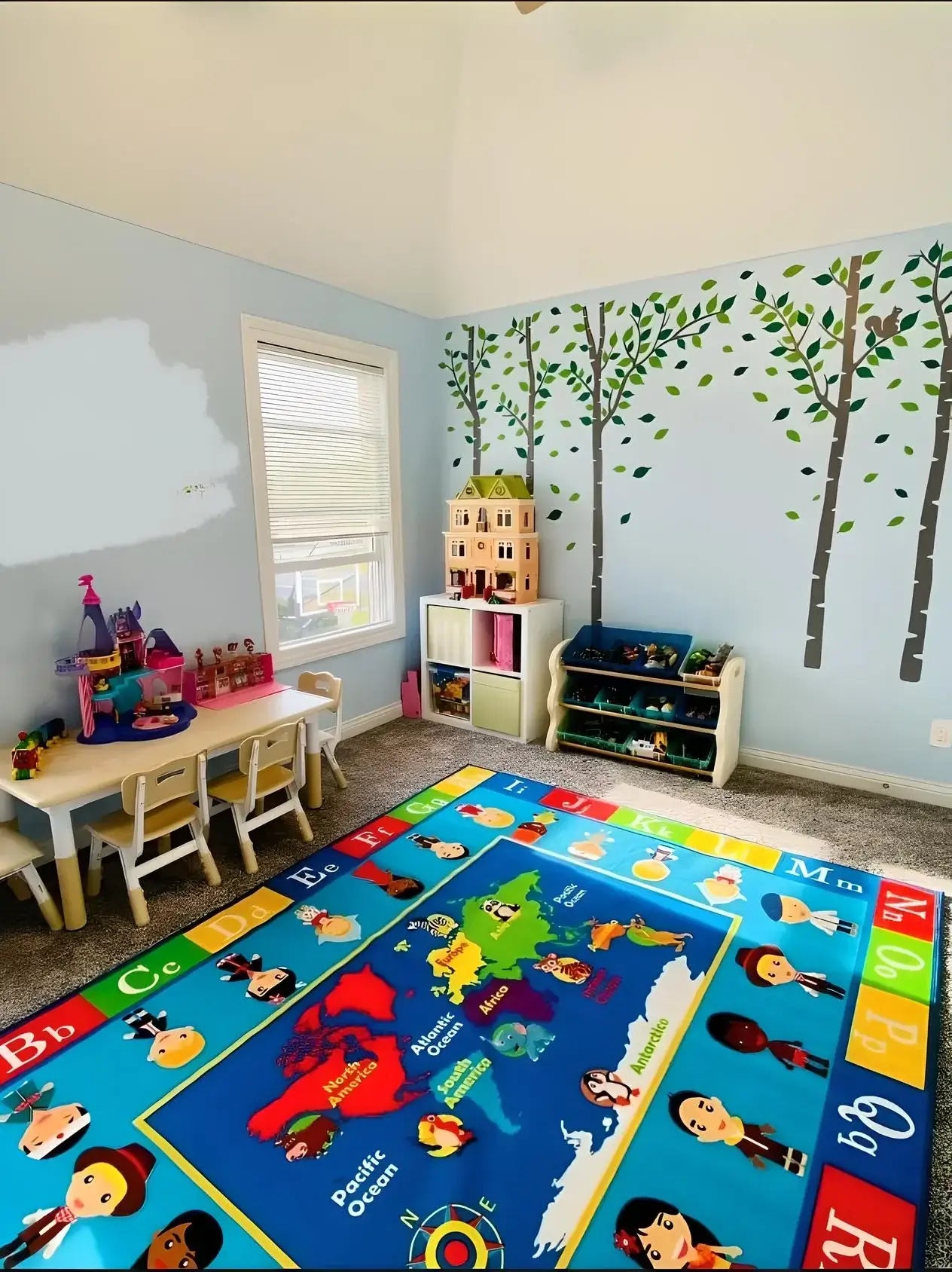The Health Impact of Classroom Flooring Choices
Educational environments house dozens of children for extended periods, making air quality and surface cleanliness critical health factors.
Poor indoor air quality can trigger asthma attacks, allergic reactions, and respiratory issues that affect learning capacity and school attendance.
Classroom rugs can either filter and trap pollutants or become sources of contamination, depending on their materials and maintenance protocols.
Recent studies by environmental health researchers indicate that properly maintained classroom carpets can actually improve indoor air quality by trapping dust particles, pollen, and other airborne contaminants that would otherwise circulate freely through heating and ventilation systems.
Identifying Health-Safe Rug Materials
Low-VOC and Non-Toxic Options
Volatile Organic Compounds (VOCs) released from synthetic materials can cause headaches, dizziness, and respiratory irritation in sensitive individuals.
Health-conscious educators should prioritize rugs certified by organizations like Green Label Plus, which ensures low chemical emissions and safer indoor air quality.
Natural fiber rugs made from wool, cotton, or jute typically emit fewer harmful chemicals than synthetic alternatives.
However, natural materials require careful selection to avoid treatments with harmful pesticides or chemical dyes that could impact classroom air quality.
Antimicrobial and Allergen-Resistant Features
Modern classroom rugs often incorporate antimicrobial treatments that inhibit bacterial growth and reduce odor development.
These treatments are particularly valuable in high-traffic educational environments where spills and accidents are common occurrences.
For classrooms serving students with allergies or asthma, hypoallergenic rug options minimize reactions to dust mites, pet dander, and other common allergens.
Some manufacturers specifically design educational carpets with tightly woven fibers that resist allergen accumulation.
Understanding Indoor Air Quality and Carpet Interaction
Particle Filtration Benefits
Well-maintained classroom rugs act as passive air filters, trapping dust particles, pollen, and other contaminants that would otherwise remain airborne.
This filtration effect can reduce respiratory irritants and create cleaner breathing environments for students and staff.
The key to maximizing these benefits lies in regular maintenance schedules that remove trapped particles before they accumulate to problematic levels.
Without proper care, rugs can become sources of poor air quality rather than solutions.
Humidity Control and Mold Prevention
Classroom rugs can help regulate humidity levels by absorbing and releasing moisture, but improper installation or maintenance can create conditions favorable to mold and mildew growth.
Adequate ventilation, moisture barriers, and prompt cleaning of spills prevent these health hazards from developing.
Essential Health-Focused Maintenance Protocols
Daily and Weekly Cleaning Routines
Effective classroom rug maintenance begins with daily vacuuming using HEPA-filter equipped machines that capture fine particles and allergens.
Weekly deep cleaning removes embedded dirt and prevents the accumulation of health-compromising contaminants.
Establishing cleaning schedules during non-school hours minimizes student exposure to dust and cleaning product residues.
Many schools successfully implement weekend deep cleaning protocols that maintain rug hygiene without disrupting educational activities.
Addressing Spills and Accidents Promptly
Quick response to spills prevents bacterial growth and eliminates odors that can impact classroom air quality.
Health-safe cleaning products designed for educational environments effectively sanitize surfaces without introducing harmful chemical residues.
Training staff and older students in appropriate spill response procedures ensures consistent maintenance standards and reduces health risks associated with contaminated surfaces.
Allergy and Asthma Considerations
Creating Allergen-Free Zones
For classrooms serving students with severe allergies or asthma, combining small-sized classroom rugs and hard-surface zones provides more flexible, health-conscious layouts.
Strategic rug placement allows schools to maintain comfortable gathering spaces while accommodating students with respiratory sensitivities.
Some educators successfully use small classroom rugs or removable rug tiles that can be cleaned thoroughly or when students experience increased sensitivity.
Material Selection for Sensitive Students
Natural latex backing and organic fiber content minimize chemical exposure for students with multiple chemical sensitivities.
However, natural materials may trigger reactions in students allergic to wool or other organic substances, requiring careful assessment of individual classroom needs.
Installation Factors Affecting Health Outcomes
Proper Ventilation Requirements
Adequate air circulation prevents moisture accumulation that can lead to mold growth and bacterial development.
Classroom rugs should never block heating vents or air return systems that maintain healthy air circulation patterns.
Professional installation often includes moisture barriers and padding that prevent ground moisture from reaching rug fibers, eliminating conditions that support mold and mildew growth.
Chemical Off-Gassing Management
New rugs may release chemical odors for several days or weeks after installation.
Scheduling installation during school breaks allows time for off-gassing to occur before students return, minimizing exposure to potentially irritating compounds.
Adequate ventilation during and after installation accelerates the off-gassing process and ensures classroom air quality returns to acceptable levels before educational activities resume.
Health Benefits of Proper Classroom Rug Implementation
Noise Reduction and Stress Management
Moment-specific classroom rugs significantly reduce noise levels, creating calmer learning environments that benefit students with sensory processing differences and attention challenges.
Lower noise levels reduce stress hormones and improve concentration capacity for all learners.
The sound-dampening properties of carpeted surfaces also protect hearing health by reducing the constant low-level noise exposure common in hard-surface classrooms with multiple active learning centers.
Physical Comfort and Ergonomic Support
Cushioned seating surfaces reduce physical discomfort during floor-based activities, encouraging longer attention spans and more comfortable positioning for students of all ages.
This physical comfort particularly benefits young learners who spend significant time on classroom floors.
Proper rug cushioning can prevent pressure points and circulation issues that develop when students sit on hard surfaces for extended periods during group activities or independent work time.
Long-Term Health Investment Strategies
Cost-Effective Health Protection
Investing in higher-quality, health-safe classroom rugs often proves economically advantageous over time through reduced replacement costs, lower maintenance requirements, and improved indoor air quality that supports better student attendance rates.
Schools that prioritize health-conscious rug selection often report fewer sick days among both students and staff, creating indirect cost savings that offset initial investment in premium materials.
Professional Assessment and Monitoring
Regular professional cleaning and air quality assessments ensure classroom rugs continue supporting rather than compromising health outcomes.
Many educational facilities successfully implement annual or biannual professional evaluations of carpet condition and indoor air quality metrics.
Creating healthy learning environments requires thoughtful attention to every element, including classroom rugs.
By prioritizing health-safe materials, implementing proper maintenance protocols, and considering the needs of sensitive students, educators can ensure their classroom rugs contribute positively to student wellbeing and academic success.
- Indoor Air Quality in Schools - Wikipedia
- Carpet and Indoor Air Quality Research - American Lung Association




Leave a comment
This site is protected by hCaptcha and the hCaptcha Privacy Policy and Terms of Service apply.